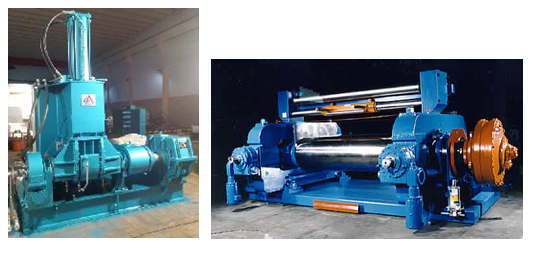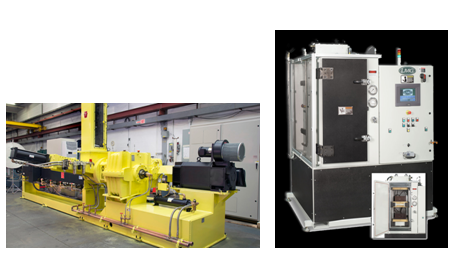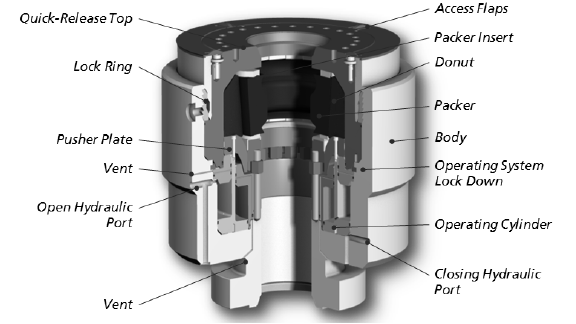Author: Marcello De Falco – Associate Professor, University UCBM – Rome (Italy)
1. Theme description
Elastomers are polymers made of long chains of atoms (mainly, carbon, hydrogen and oxygen), composed of repeated units of a single monomer or of two or more different monomers.
Elastomers are characterized by a high level of both viscosity and elasticity and they are probably the most versatile material, exhibiting the particular combination of elasticity and resilience, having the capacity to substantially deform and then return to the original shape as the forces causing the deformation are removed.
They can be divided in two main categories:
- Thermoset elastomers, as acrylic, butadiene, butyl, chlorinated polyethylene, ethylene propylene, fluorocarbon, isoprene, nitrile, polysulphide, polyurethane, silicone, etc.
- Thermoplastic elastomers, as thermoplastic urethane elastomers, styrenic block copolymers, copolyether ester elastomers, polyester amide elastomers.
In the Oil & Gas sector, they are used in a wide range of applications, which can be divided in [1]:
- sealing – the high elasticity characteristics of elastomers makes them a proper choice for sealing applications. The elastomers are used as seals in shafts, flanges, pump pistons, rods, etc.
- not sealing – applications include elastomeric belts for drive systems and power transmission, flexible hoses, personal protection products (face masks, nasal units, neck seals, etc.), expansion joints.
Elastomers are widely used also in the civil engineering sector (mounting structures, bridge bearings, expansion joints, pipe couplings, as barrier to water, roofing membranes, rubberised asphalt, concrete texturing) and in the automotive sector (tyres, suspension systems).
In the following pages, the main high performance elastomers production processes and the main innovations for Oil & Gas sector applications are described.
2. Production process
Basically, the elastomers production process is composed by two steps [2]:
- Compounding step – elastomer is mixed with additives as pigments, re-enforced agents, antioxidants, etc. The compounding is performed in a dispersion kneader at high pressure and temperature. Then, the compound mixture is further mixed in a two-roll mill, where curing agents are added. The final compound is then extracted as sheets with specific thickness.
Elastomer dispersion kneader (left) and two-roll mill (right) [3]
- Moulding/Extrusion – the final elastomeric product is shaped by an extrusion or a moulding process. The extrusion consists of three units in series: an extruder (a rotating screw inside a heated barrel), a shaping die (a metal disk with a machined opening in the desired shape) and a vulcanizator, able to give to the product the physical properties and to maintain the shape. In the moulding process, the elastomer sheets are cut and fed into heated moulds of the desired shape. Then, the elastomer is baked to vulcanize.
Elastomer Extruder [4] (left) and compression moduling press [5] (right)
3. Innovations in the Oil &Gas
Elastomers are widely used in Oil & Gas sector for many applications and a strong research effort is devoted to improve the materials properties. Specifically, the innovation actions are focused on:
- improving the chemical resistance to new products;
- increasing the operating temperature and pressure;
- improving the abrasion resistance.
In the following, some applications and product innovations in the Oil & Gas sector are described.
3.1 Offshore Drilling
Drilling sector makes an extensive use of elastomeric seals. When the drilling has to be performed in deep water, the seals have to operate at critical conditions and, consequently, their properties have to be improved. For these applications, the best elastomers are NBR (acrylonitrilebutadiene rubber), HNBR (hydrogenated acrylonitrile-butadiene rubber) and fluoroelastomers, since they are characterized by high performance in terms of operating temperature / pressure and chemical stability.
The main problems occur for the subsea equipment, which works at cold temperatures and high pressures. The elastomeric seals are used in the rotary control device, in the riser gas handling and in the flex joint and have to guarantee optimal performance in terms of stability and abrasion resistance when applied in rotational devices.
Elastomeric seals are also applied in blowout preventers (BOP), used to control the wellbore pressure. When the BOP bore is closed, the elastomer has to be able to assure large elongation properties (+ 400%) and, when the bore is opened again, the elastomer has to retract completely. Moreover, the elastomers have to resist at pressures within the range 15000 – 25000 psi.
Annular Blowout Preventers [6]
3.2 O-Rings rapid gas decompression resistance in EOR
Enhanced Oil Recovery (EOR) is a technology that uses supercritical carbon dioxide (s-CO2) to increase well pressure and reduce the viscosity of the crude oil to be extracted, thus strongly improving the well yield. But, the high content of CO2 in the crude oil can damage the elastomeric seals for two main reasons:
- the plastification of the elastomer, leading to a softening of the seal [7], [8];
- the rapid gas decompression damage, particularly serious with s-CO2 [9], [10].
Generally, two materials are used for sealing in EOR: fluoroelastomers (FKM) and Hydrogenated Nitrile Butadiene Rubber (HNBR).
The FKM suffers to the swollen (plastification) due to CO2 more than HNBR since its CO2 solubility is higher, so that usually HNBR is preferred and demonstrates good performance in applications at high level of CO2. However, many studies are in progress concerning with the improvement of elastomeric seals under s-CO2 environment.
HNBR sample after 5 days immersion in CO2 [11]
3.3 Materials for Sealing Solutions in HPHT conditions
Saint-Gobain Seals Group is going to develop innovative seals elastomers for High Pressure/High Temperature (HPHT) applications, based on specific thermoplastic elastomer formulations [12].
The tests performed under critical conditions (25 kpsi at 200°C for 4 hours, 30 kpsi at room temperature and at 250°C) reveal that the innovative materials show very good thermal and chemical properties and a strong resistance to rapid gas decompression. The main application thought for the innovative thermoplastic elastomers is the fulfillment of seals for Subsea Production system in the deep sea.
3D drawing of a Saint-Gobain Seals Group innovative thermoplastic elastomer seal [12]
3.4 Bio-elastomers
Extender oils are additives widely used in the tyre industry as plasticising substances for improving the elastomer workability and decreasing the rigidity after vulcanization. Usually, they derive from crude oil refining and contain high contents of toxic substance as polycyclic-aromatic hydrocarbons (PAH).
The European Union Directive 2005/69/EC limits the use of oils containing PAHs in the tyre industry, thus boosting the research efforts toward the development of innovative and sustainable extender oils production processes.
Among the developed studies on this topic, the one fulfilled by Matrica, a joint venture between Versalis and Novamont, is particularly interesting since it identifies a number of vegetable oils derived from biomass to be used in rubbers for tyre industry [13]. The company is developing a modified styrene-butadiene rubber (SBR) with properties similar to the PAH high content oils but derived from biomass and called bio-elastomers, with a reduced environmental impact and paving the way to a new elastomeric materials market for environmentally friendly tyres production.
3.5 Shell
SO.F.TER. Group develops high-performance thermoplastic elastomer (TPE) compounds for automotive sector using the high-quality white oil produced by the Gas-to-Liquids (GTL) technology developed by SHELL, called Shell Risella X 430. The low volatility, high viscosity and thermal color stability, makes the Shell Risella an optimal ingredient for the production of TPE for automotive dashboard applications.
The first tests performed on innovative TPE samples have demonstrated that the material is able to assure fogging characteristics 60% better than the TPE which uses conventional paraffinic oils, confirming the high potentialities of these materials [14].
____________







